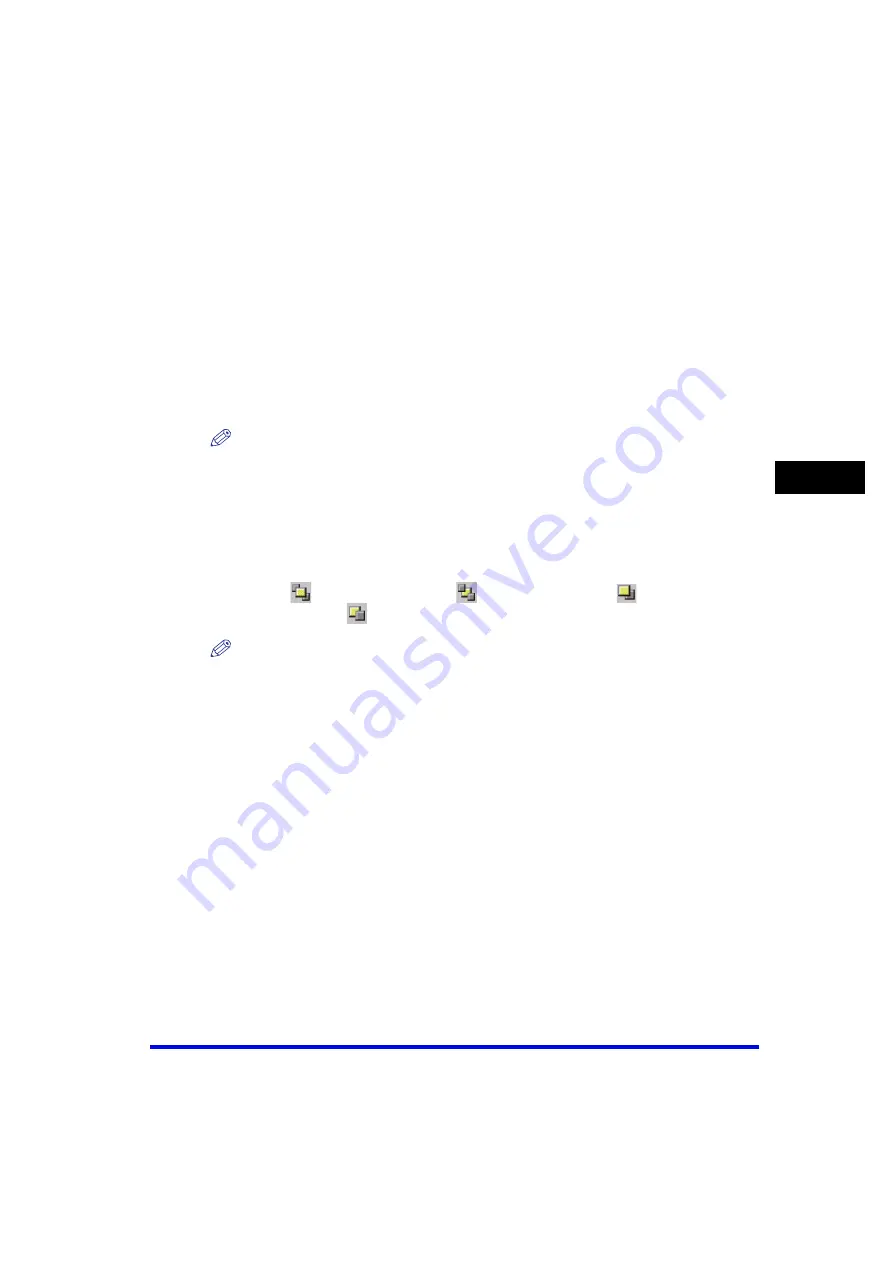
Canon Cover Sheet Editor
4-63
PC
F
a
xi
ng
4
■
Changing the Order of Display
If multiple objects overlap, you can specify the order in which they overlap. Use the
following four commands to change the order of display of overlapping objects.
•
[Bring to Front]: Moves the selected object to the front.
•
[Send to Back]: Moves the selected object to the back.
•
[Bring Forward]: Moves the selected object one level higher.
•
[Send Backward]: Moves the selected object one level lower.
1
Select the object whose display order you want to change.
NOTE
•
You can select multiple objects and change the order of display for all of them at the
same time.
•
If the object you want to select lies behind other objects and thus is hidden from view,
press [TAB] on the keyboard repeatedly until the object you want is selected. You can
also select in reverse order by holding down [SHIFT] on the keyboard while pressing
[TAB] on the keyboard.
2
Click [
] (Bring to Front), [
] (Send to Back), [
] (Bring
Forward), or [
] (Send Backward) on the toolbar.
NOTE
Alternatively, select [Bring to Front], [Send to Back], [Bring Forward], or [Send Backward]
from the [Layout] menu.
■
Aligning Multiple Objects
You can align multiple selected objects according to their left edge, right edge, top
edge, bottom edge, or center in one operation. The position of the last selected
object becomes the point of reference of alignment.
Use the following commands to change the alignment of the selected objects.
•
[Align Left]: Aligns the left edge of all objects along the left edge of the last selected
object.
•
[Align Center]: Aligns the left-right center axis of all objects along the left-right center
axis of the last selected object.
•
[Align Right]: Aligns the right edge of all objects along the right edge of the last selected
object.
•
[Align Top]: Aligns the top edge of all objects along the top edge of the last selected
object.
•
[Align Middle]: Aligns the top-bottom center axis of all objects along the top-bottom
center axis of the last selected object.
















































